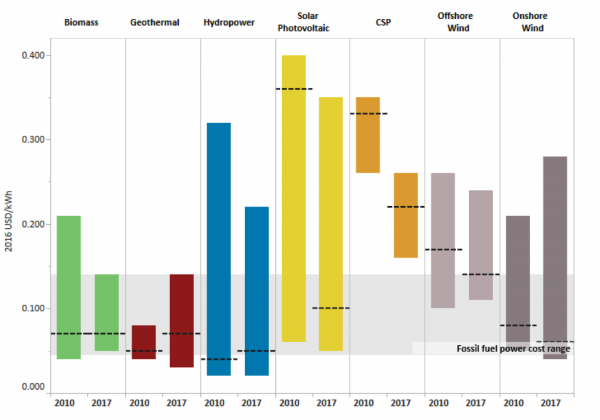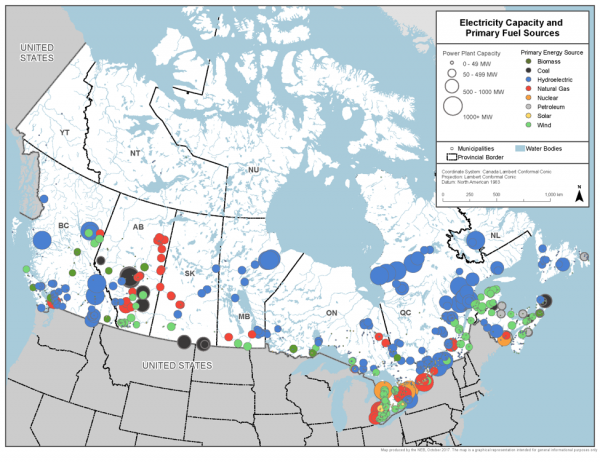While fossil fuels are still the largest global source of energy for electricity generation, the transition to low-carbon energy production might not take as long as we think. The main reason? (hint: no, it’s not the environment).
As technology improves, renewable energy from solar and wind keeps getting cheaper. The cost of generating power from wind has fallen by 23% since 2010. During this time, the cost of solar photovoltaic (PV) electricity has remarkably fallen by 73%! Combined with the rising maintenance costs of coal plants, it is estimated that 74% of the US coal production is now providing electricity at a higher cost than renewables, with the industry out-competed on cost by 2025.

Global costs of electricity from renewable energy 2010-2017. The grey band represents fossil fuel power generation cost range. Source: IRENA
And while coal demand is in decline in the rest of the world, growth in India and other Asian countries are keeping the prices high. Still, higher prices aren’t triggering new investments, since many fear that they will become stranded assets. “It appears that banks, insurance companies, hedge funds, utilities and other operators in advanced economies are exiting the coal business”.
Despite the fact that half of all US coal mines have shut down in the last decade, coal remains the second-largest energy source for U.S. electricity generation at 30%. In Canada, coal represents the third-largest energy source after nuclear and hydro sources which generate 60% of the electricity. However, this is not consistent across all provinces and territories. In fact, Alberta, Saskatchewan, Nova Scotia, and Nunavut generate the majority of electricity from fossil fuels such as coal, natural gas, or petroleum. Even though Alberta is still producing approximately 50% of their energy from coal, their climate policy will eventually push coal out of the energy mix with a plan to phase it out by 2030 as per their Climate Leadership Plan.
Ideally, other provinces will follow suit, even if this transition is driven by costs. As of April 1st, it is no longer free to pollute with GHG across Canada with the implementation of a national carbon tax.

Energy sources in Canada. Source: National Energy Board
- Log in to post comments

CRC Comments